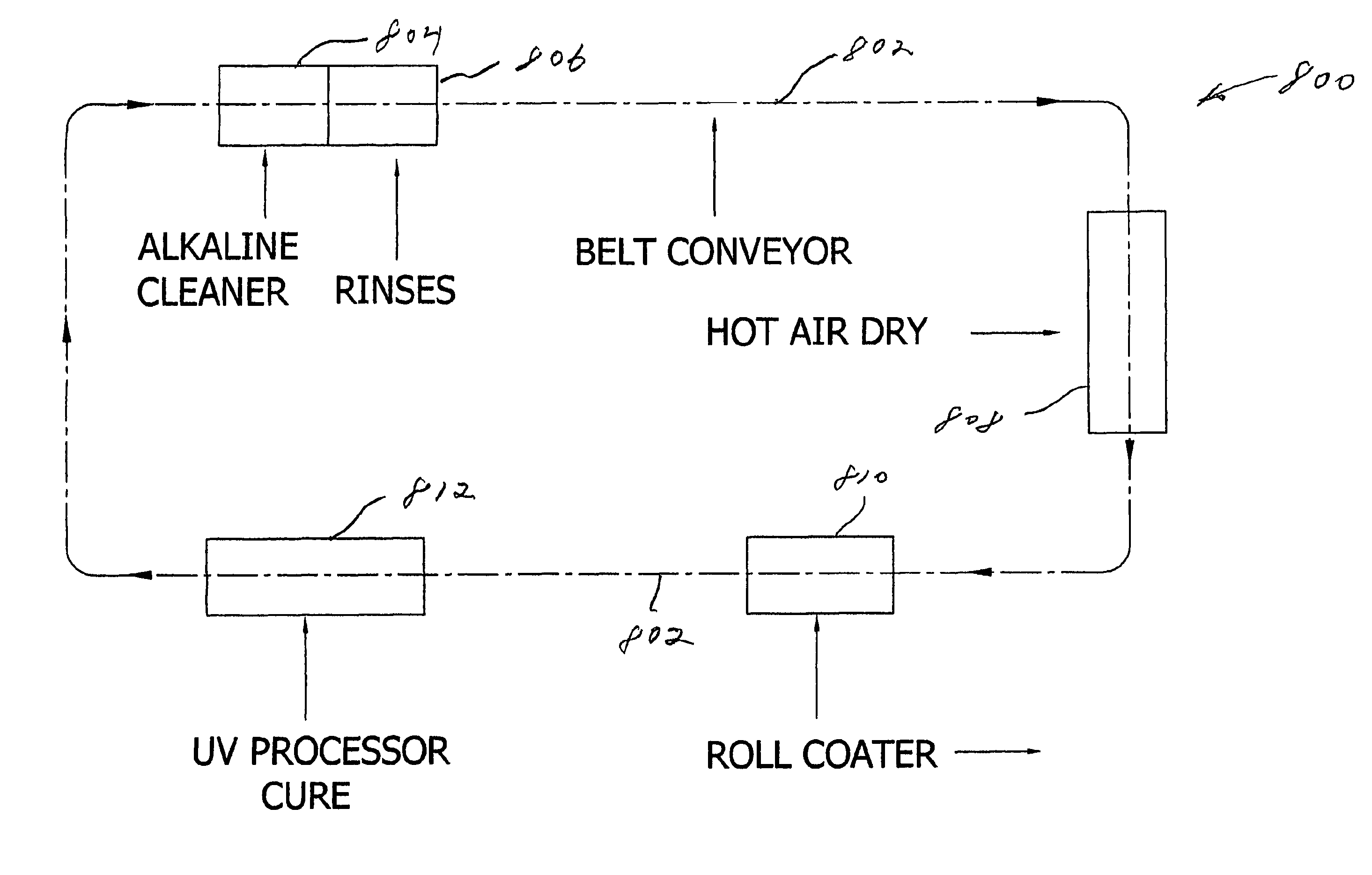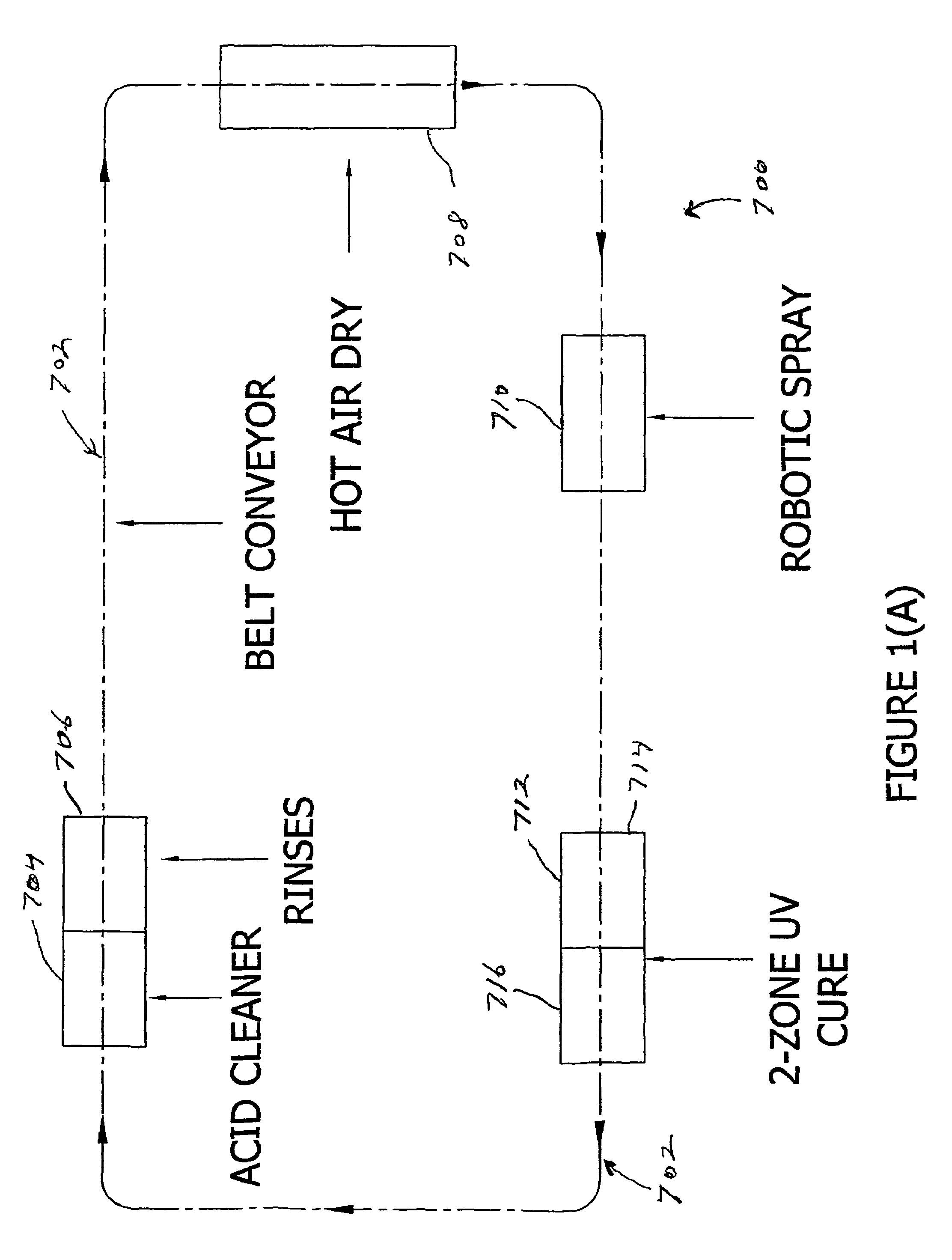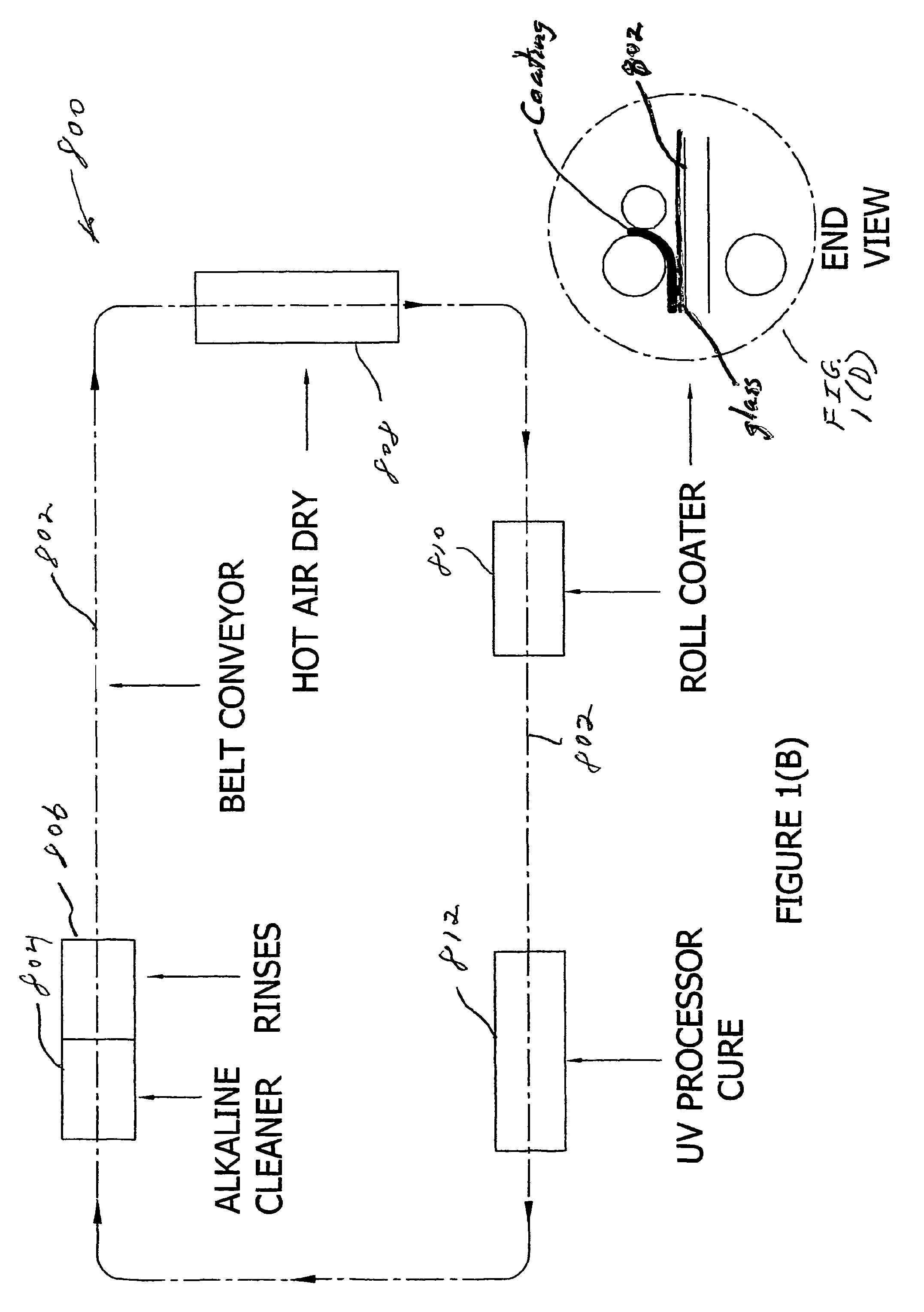Coating with anti-microbial agent for refrigerator shelving
a technology for refrigerator shelving and antimicrobial agents, which is applied in the direction of anti-fouling/underwater paints, metallic material coating processes, pretreatment surfaces, etc., can solve the problems of not only harmful bacteria but unpleasant odors, offensive odors, and inability to remove odors, so as to maintain the effect of the agent, enhance appearance, and enhance appearan
- Summary
- Abstract
- Description
- Claims
- Application Information
AI Technical Summary
Benefits of technology
Problems solved by technology
Method used
Image
Examples
first embodiment
[0032]the present invention includes the addition of the anti-microbial material to epoxy / polyester hybrid powders which are electrostatically applied to low-carbon steel wire that has been resistance welded and assembled into numerous models and shapes. These models and shapes serve as refrigerator shelving and / or forms, trivets, baskets, dividers or racks. They may be stamped, cold-rolled steel cantilever brackets and roll-formed steel sections, also resistance welded to a wire assembly. As an example, FIG. 4 illustrates a wire shelf 100 which may be manufactured in accordance with the foregoing. The wire shelf 100 may consist of steel body wires 102 which are arranged in a parallel configuration and interconnected through the use of steel wire reinforcement bars 104. In addition, as further illustrated in FIG. 4, the wire shelving 100 may include a cold-rolled steel front trim 106. After coating, the parts are cured in a bake oven. In this embodiment, the wire refrigeration shelf...
second embodiment
[0033]the invention includes the addition of the anti-microbial agent to a coating composition that is applied to the surface of refrigerator glass shelving. This coating composition can consist of a matrix made of epoxy-acrylate, an adhesion promoter which is a functional silane, a free-radical photo-initiator and the silver based anti-microbial agent. The liquid coating may be applied by roller, curtain, or spray to the glass shelving and cured by UV light. However, in this application, roller coating is the preferred method of coating a flat glass article. An example of glass shelving which may be utilized with this type of coating is illustrated in FIG. 3 as glass shelf 200. The shelf 200 may consist of a tempered glass portion 202, with an extruded plastic front trim 204 releasably connected thereto. Another type of glass shelf which may be utilized in accordance with the invention is illustrated in FIG. 2 as cantilever glass shelf 300. As shown specifically in FIG. 2, the cant...
PUM
| Property | Measurement | Unit |
|---|---|---|
| thickness | aaaaa | aaaaa |
| thickness | aaaaa | aaaaa |
| thickness | aaaaa | aaaaa |
Abstract
Description
Claims
Application Information
 Login to View More
Login to View More - R&D
- Intellectual Property
- Life Sciences
- Materials
- Tech Scout
- Unparalleled Data Quality
- Higher Quality Content
- 60% Fewer Hallucinations
Browse by: Latest US Patents, China's latest patents, Technical Efficacy Thesaurus, Application Domain, Technology Topic, Popular Technical Reports.
© 2025 PatSnap. All rights reserved.Legal|Privacy policy|Modern Slavery Act Transparency Statement|Sitemap|About US| Contact US: help@patsnap.com



